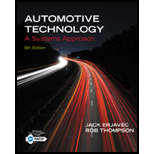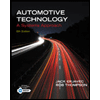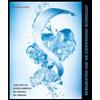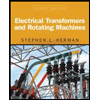
Concept explainers
What is the most efficient way to increase a radiators efficiency?
To increase a radiator’s efficiency the most efficient way that is used.
Answer to Problem 1RQ
The temperature difference between the coolant and air passing through.
Explanation of Solution
The function of a radiator is to transfer heat from the engine to the atmosphere or the air passing through it. There are two types of radiators depending on the flow of coolant inside the radiator, viz. down flow and crossflow radiators. The efficiency of the radiator depends on a number of factors: the area of contact, the temperature difference, and the coolant capacity. The area of the radiator depends on its design and compactness of the engine whereas the difference in temperature depends upon the coolant inside the radiator and the temperature of the cooling air passing through it. The efficiency also depends on the pumping power as higher pumping force to reduce the coolant temperature faster, but it also needs higher energy to run the pump.
Conclusion:
As the area and other design parameters of a radiator depend on various aspects, the efficiency of the radiator depends on the temperature difference between the coolant and air passing through.
Want to see more full solutions like this?
Chapter 14 Solutions
Automotive Technology: A Systems Approach (MindTap Course List)
- What types of headlights do not have a filament?arrow_forwardWhat would be done to increase the compressor speedon a belt-driven compressor?A. Decrease drive pulley sizeB. Increase drive pulley sizeC. Increase driven pulley sizeD. Both A and Carrow_forward9. While preparing to remove an engine: Technician A disconnects the refrigerant lines at the air-conditioning compressor and allows the refrigerant to totally leak out before removing the compressor. Technician B installs plugs in the ends of the refrigerant hoses after they have been disconnected. Who is correct?arrow_forward
- The ________transfers heat from the hot gas to the airstream to heat the structure.arrow_forwardWhich of the following components is NOT a type of ventilation system? Select one: a. Airconditioning Units b. Venting Skylight c. Boilers d. Exhaust Fansarrow_forwardwhat type of radiator pressure cap is found on today's vehiclearrow_forward
 Automotive Technology: A Systems Approach (MindTa...Mechanical EngineeringISBN:9781133612315Author:Jack Erjavec, Rob ThompsonPublisher:Cengage Learning
Automotive Technology: A Systems Approach (MindTa...Mechanical EngineeringISBN:9781133612315Author:Jack Erjavec, Rob ThompsonPublisher:Cengage Learning Refrigeration and Air Conditioning Technology (Mi...Mechanical EngineeringISBN:9781305578296Author:John Tomczyk, Eugene Silberstein, Bill Whitman, Bill JohnsonPublisher:Cengage Learning
Refrigeration and Air Conditioning Technology (Mi...Mechanical EngineeringISBN:9781305578296Author:John Tomczyk, Eugene Silberstein, Bill Whitman, Bill JohnsonPublisher:Cengage Learning Electrical Transformers and Rotating MachinesMechanical EngineeringISBN:9781305494817Author:Stephen L. HermanPublisher:Cengage Learning
Electrical Transformers and Rotating MachinesMechanical EngineeringISBN:9781305494817Author:Stephen L. HermanPublisher:Cengage Learning


